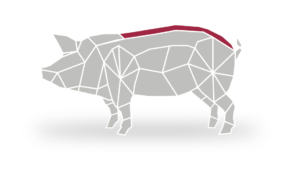This is one of the most common doubts that customers tend to have: is it better to buy a ham or a shoulder? The answer is easy: it is not that one is better than the other but of course, as many other things in life, it depends on one’s preferences and needs.
Let’s first have a look at the characteristics of each product.
The first thing you should know is that what we call ham (“jamón”) corresponds to the hind leg of the pig, while the shoulder (“paleta” or “paletilla”) refers to the front leg of the animal.

When it comes to size, hams are always larger than shoulders. Regarding weight, hams usually oscillate between 7 Kg and 9.5 Kg, although it can be lower in 100% Iberian hams, or higher in larger pigs. By contrast, shoulders are usually between 4 Kg and 6 Kg.
In terms of curing, Iberian ham tends to need between 24 and 36 months depending on the type of ham it is, while the Iberian shoulder usually needs between 16 and 24 months depending on the type as well.
Flavour:
Even though they have a quite similar taste, we can still find some differences. If we want it to be a bit more mellow thanks to its intramuscular fat, and also a greater variety of flavours, we should opt for the ham.
If, on the other hand, we prefer a more uniform flavour, with a plus of intensity, our choice should be the shoulder.
These are really small details that depend more on the preferences of the consumer than on the differences between products themselves.

A shoulder will always be cheaper. That is mainly because of its size: it will always be smaller. Therefore, its weight and amount of lean product will be lower.
In addition, the price per Kg of the shoulder will also usually be lower. The reason why this happens is because the amount of lean meat in proportion to the amount of rind, fat and bone is lower in the shoulder than in the ham.
Another factor to take into account is the curation: it is always lower in a shoulder than in a ham. This means that the production cost of a of shoulder is lower than that of a ham. But why? The curing period for shoulders is on average 2/3 of that needed for hams. This is mainly due to the difference in size: hams tend to be bigger, so they need more time to complete their curing process.
In short: What should I buy?
In any case, what is clear is that success is guaranteed with both the ham and the shoulder. Just decide which one is perfect for you, and enjoy it!
Contactar